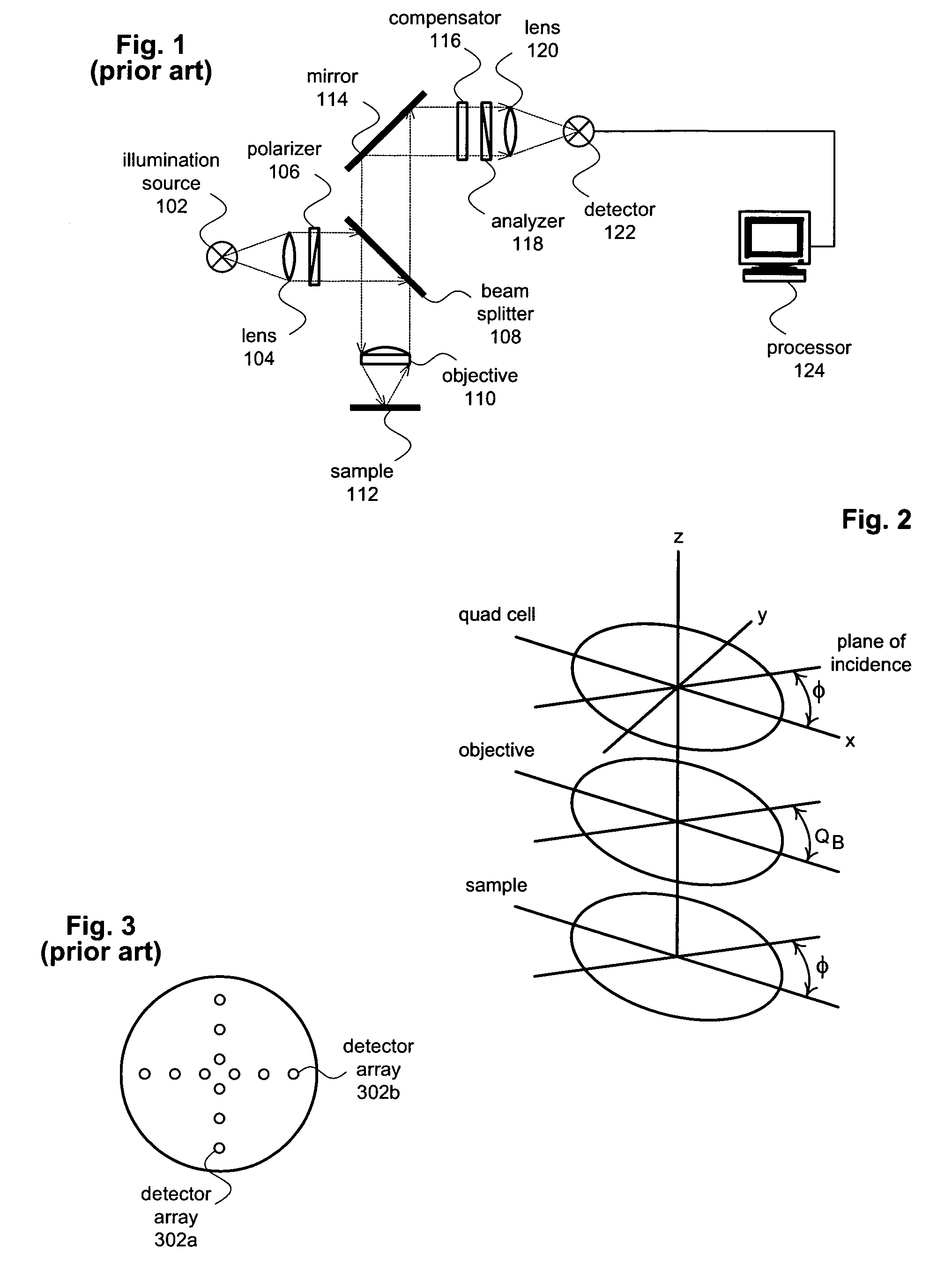Self-calibrating beam profile ellipsometer
a self-calibrating, beam-profile technology, applied in the field of optical methods, can solve the problems of chromatic aberration, limit the reduction of measurement spot size, and is not always practical to reduce measurement siz
- Summary
- Abstract
- Description
- Claims
- Application Information
AI Technical Summary
Benefits of technology
Problems solved by technology
Method used
Image
Examples
Embodiment Construction
[0016]The present invention provides a real-time calibration method for beam profile ellipsometry systems. The calibration method increases ellipsometer accuracy by separating the ellipsometric parameters related to the sample from those related to the focusing optical elements. FIG. 1 shows an ellipsometer 100 suitable for use with the calibration method. As show in FIG. 1, ellipsometer 100 includes an illumination source 102 that produces a polychromatic or monochromatic probe beam. In some cases, illumination source will include one or more separate illumination sources that are combined or multiplexed in time to create the probe beam. After leaving illumination source 102, the probe beam is focused by a lens 104 and passed through a polarizer 106. Polarizer 106 imparts a known polarization state to the probe beam. Polarizer 106 may be, for example, a quartz Rochon prism, but in general the polarization does not necessarily have to be linear, or even complete. Polarizer 106 may b...
PUM
| Property | Measurement | Unit |
|---|---|---|
| angles of incidence | aaaaa | aaaaa |
| angles of incidence | aaaaa | aaaaa |
| azimuth angle | aaaaa | aaaaa |
Abstract
Description
Claims
Application Information
 Login to View More
Login to View More - R&D
- Intellectual Property
- Life Sciences
- Materials
- Tech Scout
- Unparalleled Data Quality
- Higher Quality Content
- 60% Fewer Hallucinations
Browse by: Latest US Patents, China's latest patents, Technical Efficacy Thesaurus, Application Domain, Technology Topic, Popular Technical Reports.
© 2025 PatSnap. All rights reserved.Legal|Privacy policy|Modern Slavery Act Transparency Statement|Sitemap|About US| Contact US: help@patsnap.com



